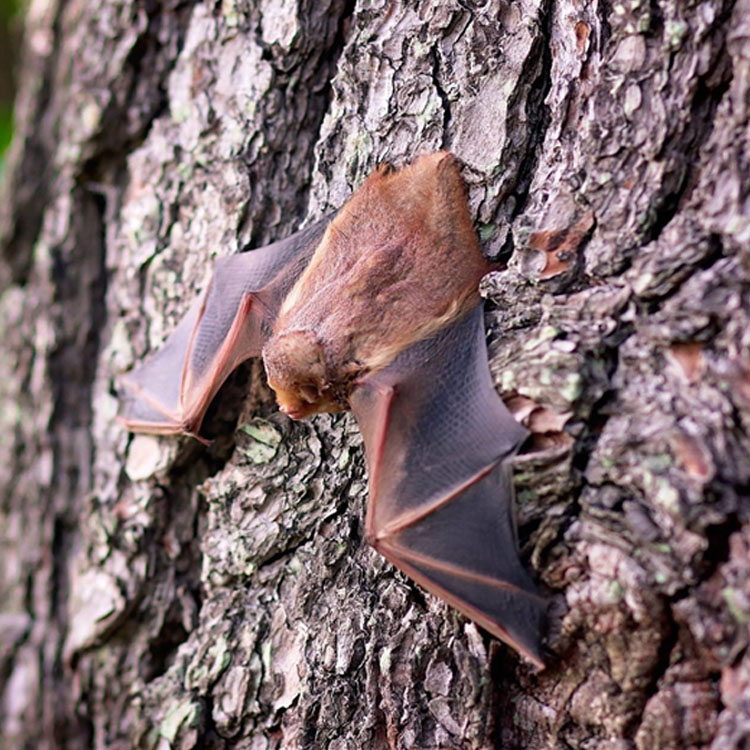Little Brown Bats
Myotis lucifigus
This species is small and smart. They have mouse-like ears and are one of the most common species of bat in North America, along with the Mexican Free-Tailed Bat. Because they are so popular in this country, they are likely your new upstairs neighbors.

Why Do Little Brown Bats Live in Attics?
Little Brown Bats will live in attics that are cool and dry in just about any part of North America. When they leave your attic at night to feed, they'll look for partly wooded areas with access to still water. If you are close to areas like this, you'll likely find bats roosting in a nearby attic, barn, crawlspace, or garage.
Appearance
Little Brown bats are, like the name suggests, a brown color with darker brown wings. Fur covers their torso and half of their head, and their winds are the typical leathery furless skin you think of when you imagine a bat.
Bats are extremely capable with their fore and hind limbs, which have the ability to grab and carry. However, Little Brown Bats don't usually use their limbs in the process of feeding, preferring to eat with their mouths.
Size & Weight
These creatures aren't as big as you think, and can squeeze themselves through seemingly impossible spaces. An average wingspan is less than a foot from tip to tip, and only about 10cm long from tail to snout.
Bats don't weight very much at all, weighing in at a max of 14 grams.
What Do Little Brown Bats Eat?
Don't worry–Little Brown Bats are not going to go for your neck if you run into one of them in your attic or yard. These helpful creatures eat most of our household pets, including the pesky mosquito. That's part of why they are protected by the Endangered Species Act; they are so invaluable in our local suburban ecosystems.
They're Only Cute at the Zoo
It's true. Once they're in your attic, generating several ounces of feces apiece each day, they lose their appeal. They'll find their way into your attic one way or another, and once they do, they'll be stealthy tenants until there is a large enough colony for you to notice them. Once you notice them (the odor, stains on your ceiling, loud rustling), it will be too late to save your attic insulation.
